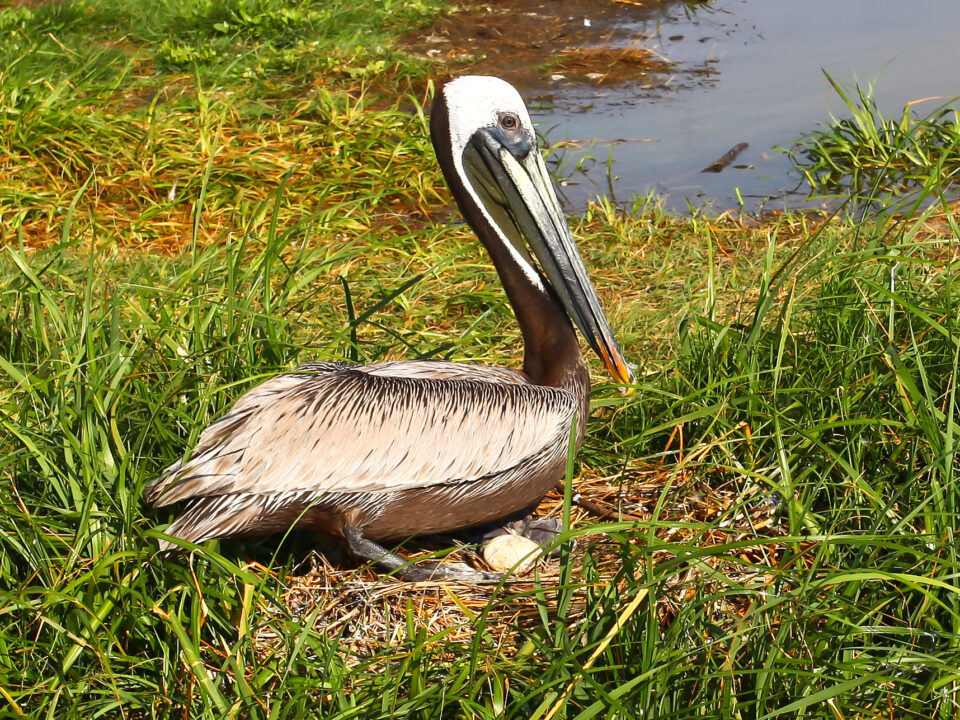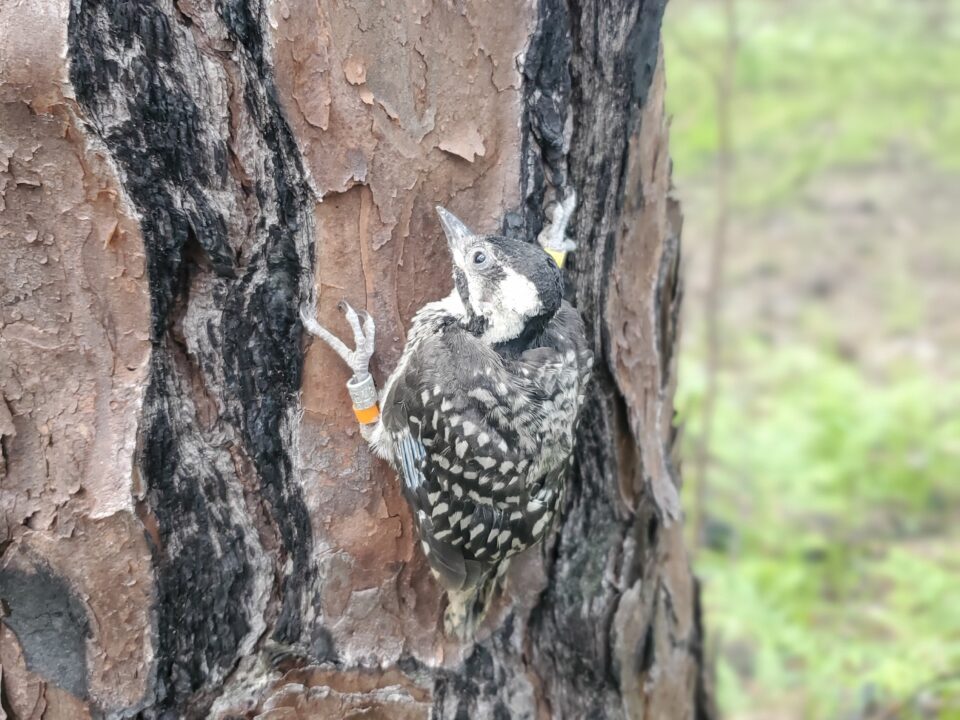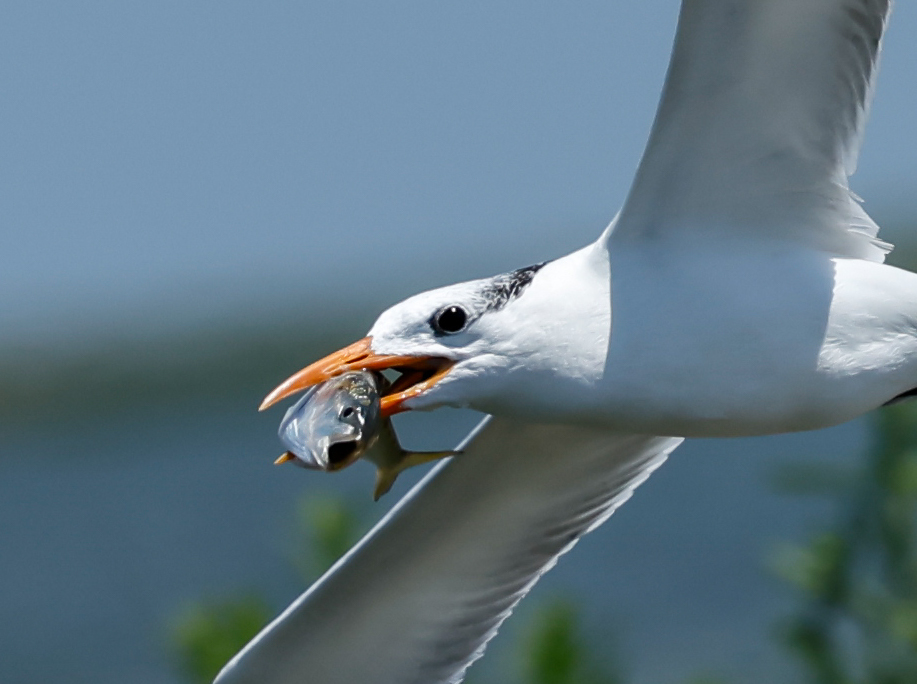Henslow’s Lament

RCW Cavity Creation Benefits the Surrounding Piney Grove Animal Community
January 11, 2023
The Gathering
March 29, 2023By: Bryan Watts
3/20/23
A Carolina wren sings from the edge of myrtle with a heart as big as a day moon. The wind has dropped out over night and the rising air is thick with marsh. I am alone in a section of Saxis Marsh in Accomack County, Virginia with no sign of people – nothing to violate the peace except for the birds that belong to the marsh. A narrow trail where the deer have followed in single file for generations cuts through the marsh and traces the high ground. I follow, pausing every hundred meters to listen. This is the third time I have walked this trail in the decade since the late 1990s – the last definitive record of Henslow’s sparrows here. Their footprints moved over this marsh as far back as we have records and then abruptly off into silence.
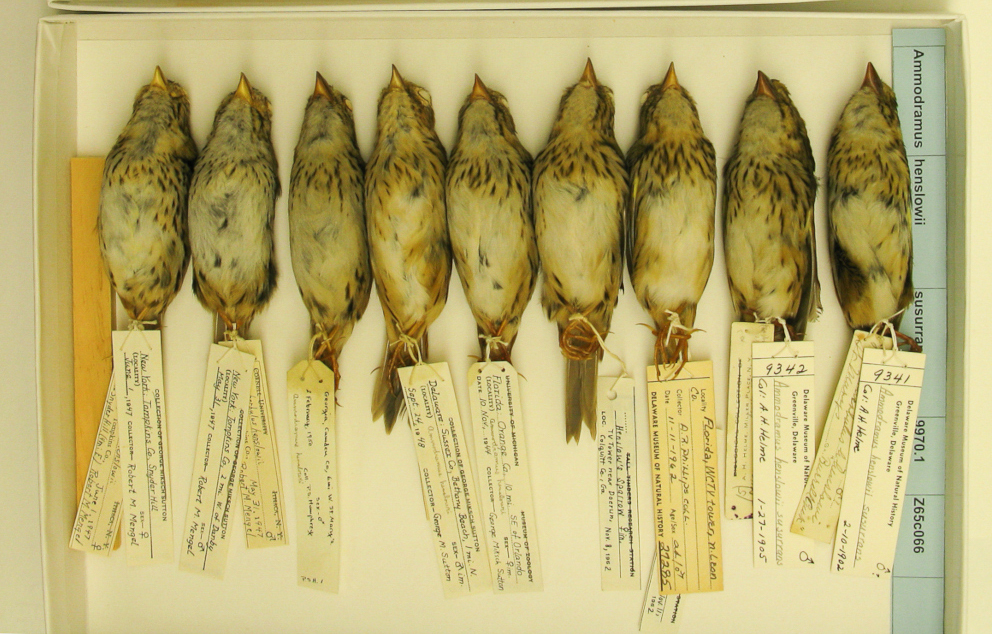
Saxis Marsh would become for the saltmarsh Henslow’s sparrow what Wounded Knee was to the Lakota Sioux. For decades they fought losing battles for survival in marshes from New England through the mid-Atlantic. By the late 1990s, Saxis supported the last of their kind. In Saxis, they would finally lose the war and become the first presumed casualty of sea-level rise along the Atlantic Coast. It is said that the sweet grass on the Pine Ridge Reservation weeps for the men, women and children massacred at Wounded Knee. Does the switch grass where the Henslow’s once nested weep for the fallen in Saxis Marsh?
The saltmarsh Henslow’s never had the bold exuberant song of the Carolina wren. They lived a mostly hidden life within the dense grass. Their insect-like song, a diminutive (some would say pitiful) “tse-lick” was easily missed and blended in with the sound of grass rustling in the wind. But they had their moments. At the end of soft spring rains, males ascended to the tallest grass stems, reared back and tse-licked with all their being, revealing the yellow bend of the wing and frequently flying down to the ground and cavorting with females. Sitting among them in these untouched marshes you had the feeling that they fit here and that the marriage between habitat and bird was right. Walking the empty marsh now feels like the loss of a loved one. There was still much to be learned but the dialogue was cut short. Many questions remain that can no longer be asked. You carry the shared experiences inside you and do your best to hold on to the memories and lessons. You think back in your mind’s eye about magical evenings when the only thing that divided earth and sky was the gild of sunlight on the marsh, and the only thing that pierced the silence was the quiet unassuming call of the Henslow’s.
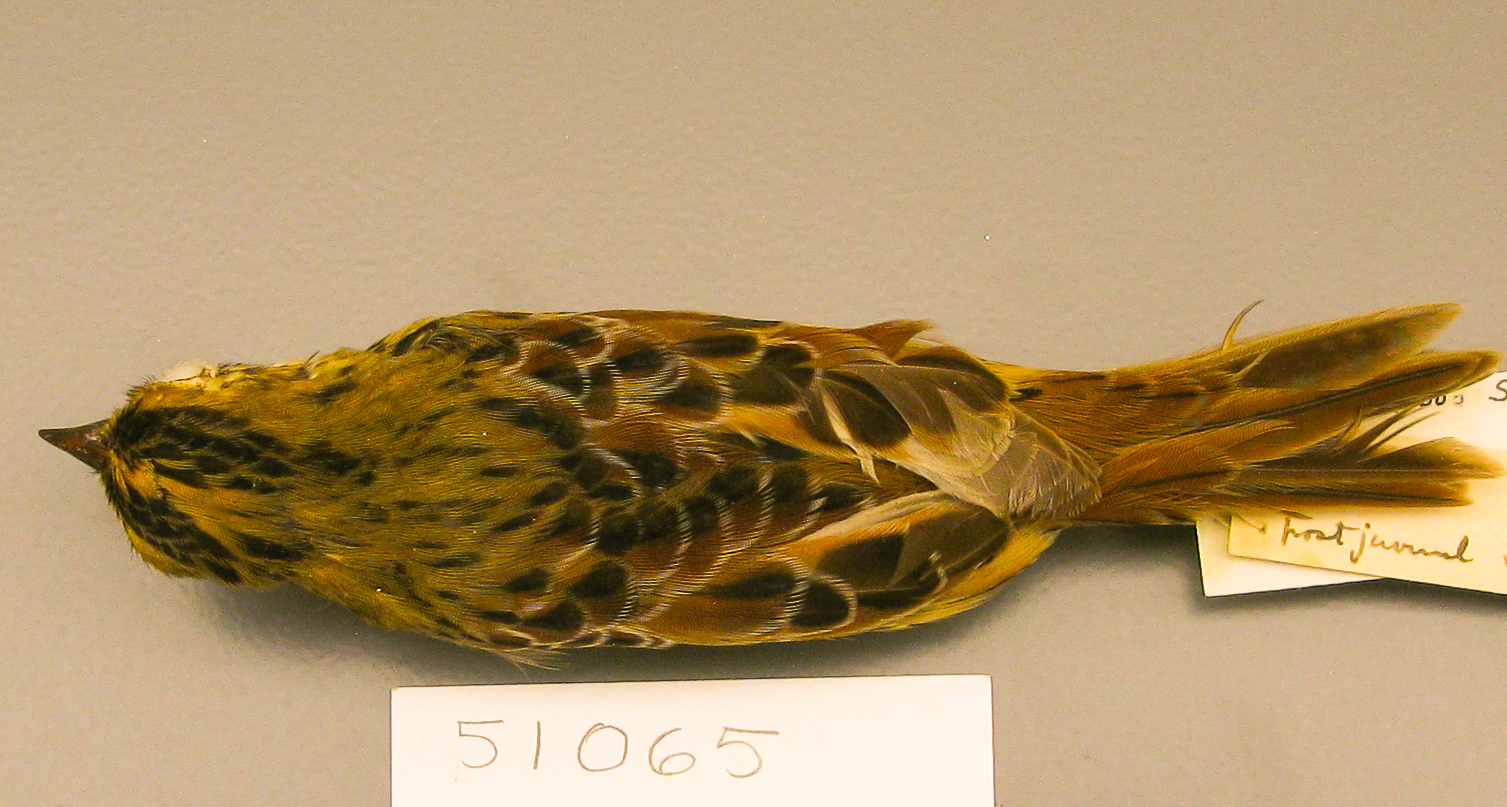
There will come a day when all of us who have sat with Henslow’s in the salt marshes are lost to time marking the end of all living memory. Future generations will have only stories of ghosts from the past and the few specimens that were collected directly from the marshes will be the only physical relics to prove that they existed. Specimens collected by some of the pillars of early North American ornithology including William Brewster, Harold Bailey, Arthur Wayne, George Sutton and Alexander Wetmore. Recently, I had the opportunity to inspect and measure some of these specimens and to reflect on the loss of a unique bloodline. There is something eerie about holding these specimens collected over a century ago. There was little known about this population at that time. It must have been an adventure just to get to these remote habitats by horse. One can imagine the exhilaration on coming upon such a poorly known species in a remote place. They could not have known that in just a short time their discoveries would disappear altogether.
Henslow’s sparrows still exist beyond the eastern salt marsh. Prior to the early 1850s, Henslow’s sparrows occupied two centers of abundance including the central prairies and the salt marshes from Massachusetts through North Carolina. These isolated populations exhibited morphological divergence and were considered subspecies. By the late 1800s, forest clearing had resulted in an expansion of the central prairie distribution both north and east and an expansion from the salt marsh into the eastern Coastal Plain and Piedmont. During the post Civil War period, Henslow’s sparrows east of the Appalachians were considered abundant in Washington D. C. and were widely distributed in the Coastal Plain and Piedmont from North Carolina to southern Canada. Expansion of agriculture west of the Appalachians has resulted in an ongoing expansion from their core in the central prairies north toward the Great Lakes. Loss of the original prairie habitat has impacted Henslow’s but they appear to have benefited from landuse changes within the upper mid-west. However, a different pattern has emerged east of the Appalachians. After the 1930s, broad reforestation of the region resulted in the loss of habitats into which they had expanded from the salt marshes and last breeding records were recorded for a number of northeastern states. Currently, stable populations are restricted to locations where management maintains habitat to their liking including Radford Arsenal in Virginia and on the Voice of America sites in North Carolina. As the inland population was being lost the original salt marsh population was being dismantled marsh by marsh. Now what is left of the salt marsh Henslow’s are refugees in a foreign land. We do not know if these birds are from pure salt marsh stock or a mix with prairie birds. Either way, their bond with the peat and plants of the high marsh has been broken.
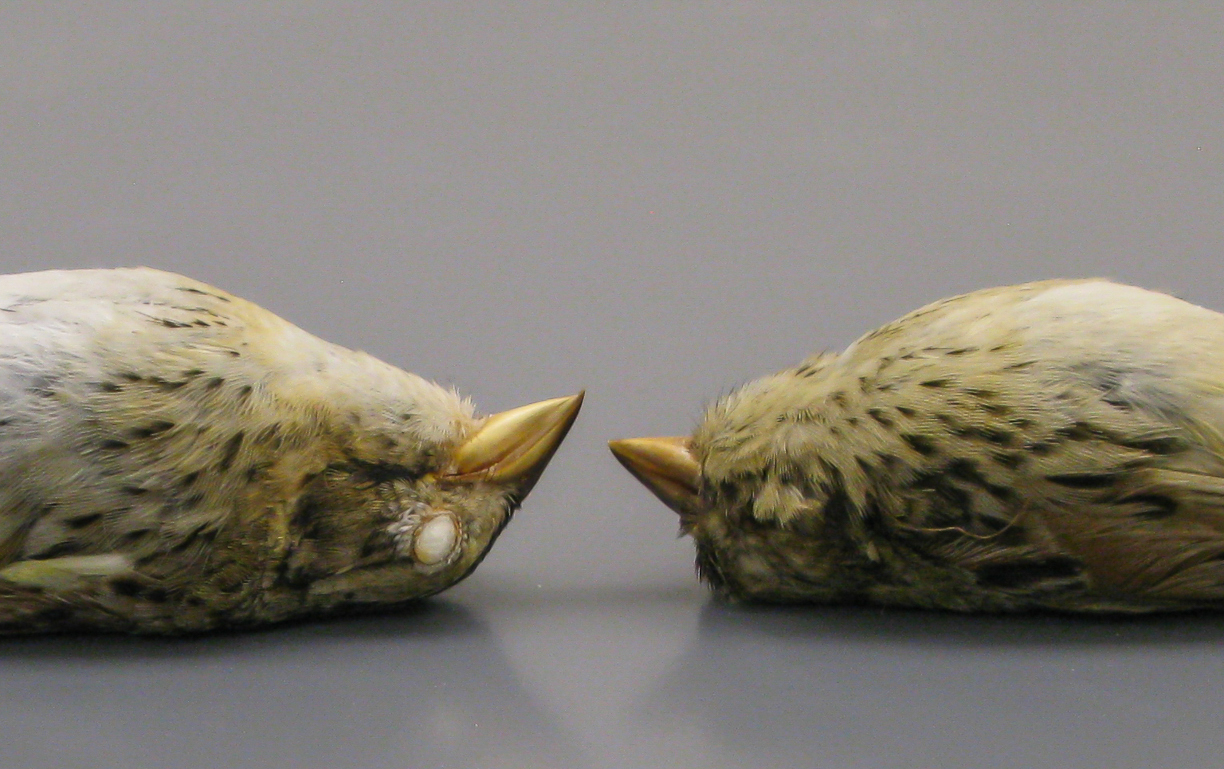
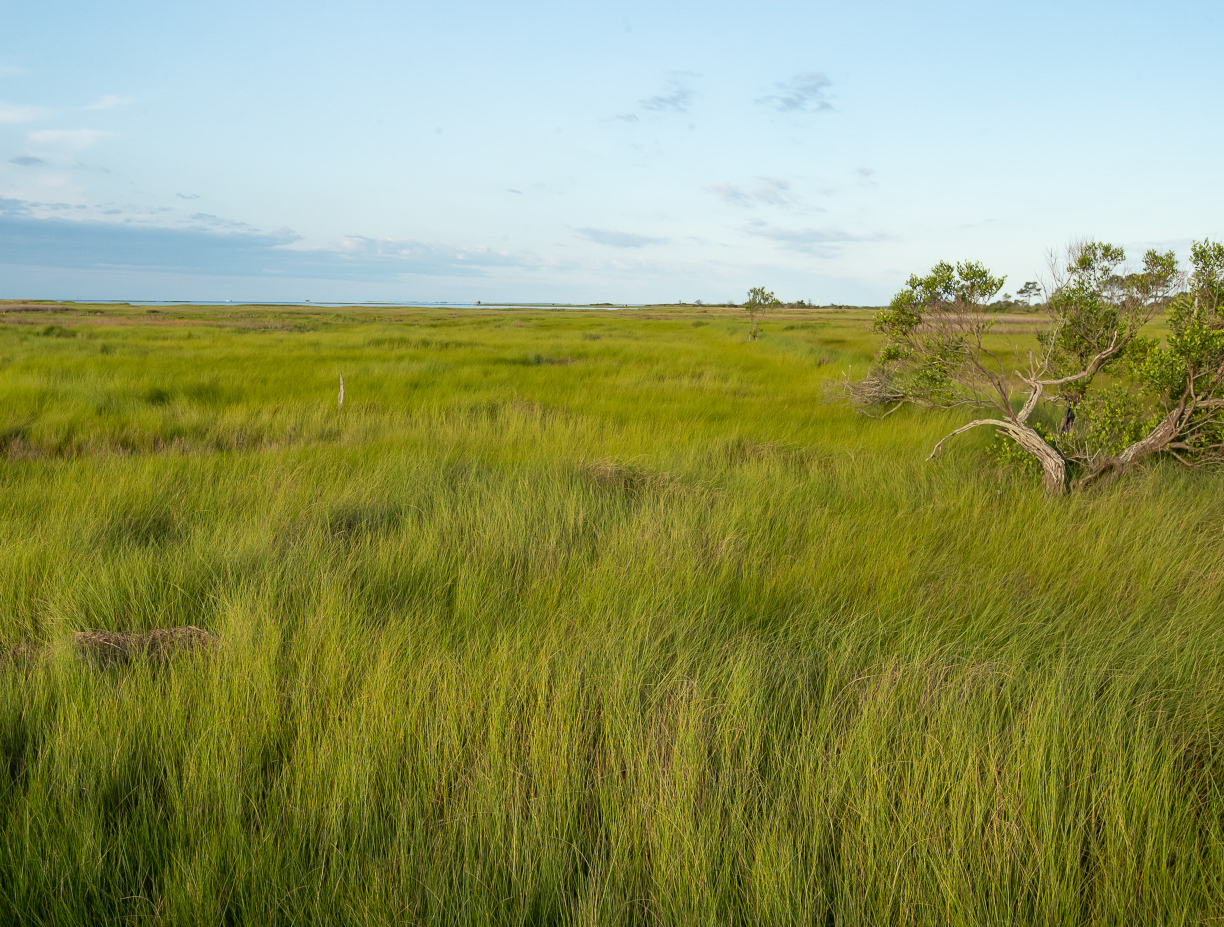
The original salt marsh Henslow’s was distinctly different from the prairie Henslow’s. William Brewster, who described the salt marsh form in 1919, noted that eastern birds had darker dorsal plumage, more yellow at the bend of the wing and a much heavier bill. The great Russ Greenberg studied how life in salt marshes led to changes in sparrow morphology compared to their inland counterparts. Over thousands of generations the birds had become specialized. Across many species he showed that birds living in salt marshes were larger, had larger bills and had darker plumage when compared to their upland cousins. When compared to prairie Henslow’s, the salt marsh Henslow’s exhibit this common set of traits. He speculated that the larger bills reflect a different foraging environment and a greater dependence on probing for invertebrate prey. He also speculated that larger bills allowed marsh sparrows to more easily dissipate body heat while conserving water in these habitats that are fresh water limited with little shade. As with other salt marsh sparrows, the Henslow’s appears to have become specialized to live successfully within this harsh environment.
Given the direction and pace of change, it seems unlikely that Henslow’s will ever occupy the high salt marshes again. Predictions for the foreseeable future are that seas will continue to rise suggesting that Henslow’s will not be the last of the marsh specialists to be eliminated. Populations of close habitat mates including the eastern black rail, sedge wren and saltmarsh sparrow are collapsing. As more marsh sites have fallen the vigil has begun. Where these populations will make their last stands is becoming increasingly clear. But populations are amazingly resilient and when these last stands will occur is not at all clear. Will we care when they lose their war of survival? Will we be there to mark their passing any more than we marked the loss of the salt marsh Henslow’s? How many of us will toss and turn and wake up in a cold sweat after they are gone?

